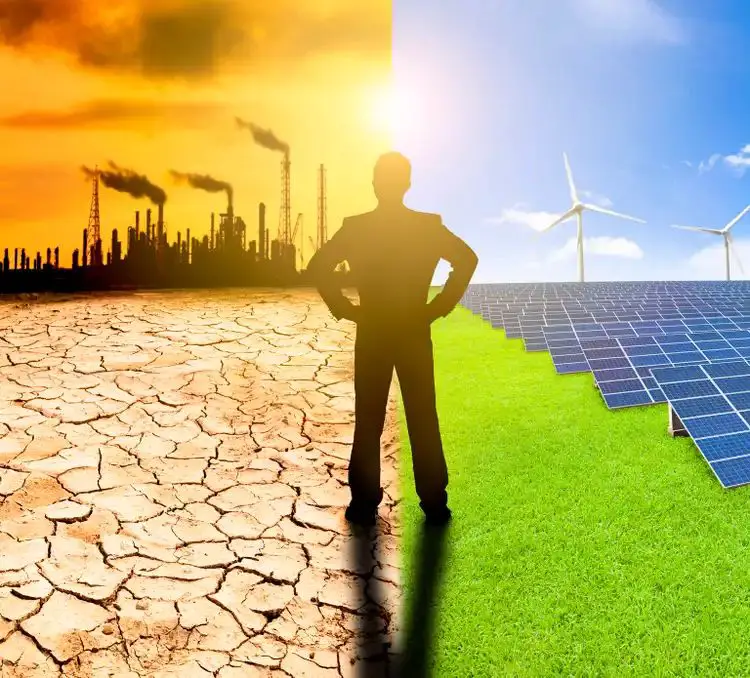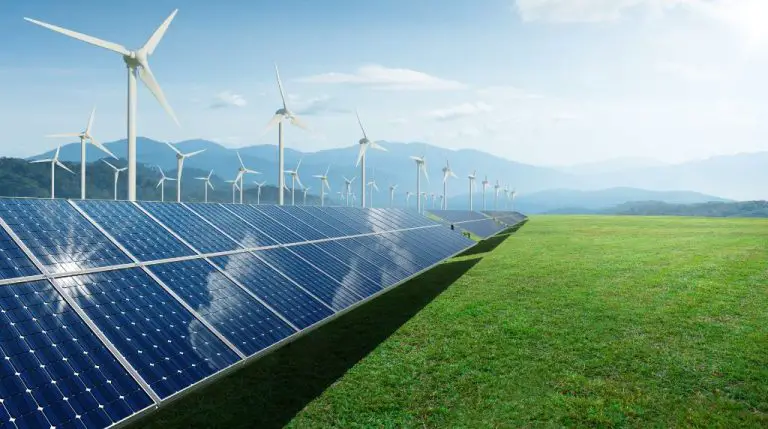What Is The World’S First Hydrogen-Powered Superyacht?
The hydrogen-powered superyacht Aqua was unveiled in 2019 by Dutch shipbuilder Sinot. At 112 meters long, Aqua is considered the world’s first superyacht to utilize hydrogen fuel cell technology as its primary power source.[1] This groundbreaking vessel features a fully integrated hydrogen system that extracts hydrogen from seawater through electrolysis. The extracted hydrogen is then converted into electrical energy by fuel cells to propel Aqua across the seas. With zero greenhouse gas emissions, the superyacht promises a new era of ultra-luxury green boating.
[1] https://www.architecturaldigest.com/story/worlds-first-hydrogen-powered-superyacht-644-million
The Ship
The world’s first hydrogen-powered superyacht is called ONYX H2-BO 85. It was designed by MASK Architects, a design studio based in the Netherlands (Source).
At 85 meters long, ONYX H2-BO 85 is larger than most superyachts on the water today. Some key specifications include:
- Length: 85 meters
- Beam: 14 meters
- Draft: 3.5 meters
- Gross tonnage: 2600 GT
- Top speed: 17 knots
- Cruising speed: 12 knots
- Range: Transatlantic at 12 knots
The superyacht has a sleek exterior design with floor-to-ceiling windows to let in natural light. The interior features luxurious amenities like a spa, gym, and large pool.
Hydrogen Fuel Cells
Hydrogen fuel cells on superyachts like the TQ-1260 work by combining hydrogen and oxygen atoms to produce electricity through a chemical reaction. The only byproduct is water, making hydrogen a zero-emissions fuel source.
Fuel cells have some key advantages over traditional diesel engines on superyachts:
- Fuel cells are more efficient, converting up to 60% of the chemical energy into electricity vs. around 40% efficiency for diesel engines (source).
- Hydrogen fuel cells produce no air pollution or greenhouse gases. Diesel exhaust contains harmful pollutants like particulate matter, nitrogen oxides, and sulfur oxides.
- Fuel cells run very quietly with minimal vibration, resulting in a more pleasant onboard experience.
- Hydrogen can be produced via renewable energy sources like solar and wind, enabling completely clean energy.
By utilizing fuel cell technology, superyacht builders like Lürssen aim to provide high performance while reducing the environmental impact of large yachts.
Emissions Reduction
One of the main benefits of using hydrogen fuel cells on superyachts is the dramatic reduction in emissions compared to traditional diesel-powered yachts. According to Carbon Credits, the Zero Cat superyacht produces only water as exhaust, resulting in zero carbon emissions. This is a major improvement over diesel engines which emit high levels of pollutants like nitrogen oxide and particulate matter that contribute to climate change and negatively impact human health.
Diesel superyachts are notoriously heavy polluters due to their massive engines and frequent usage. A 2021 study found that just 7 superyachts produced the same amount of nitrogen oxide emissions in one summer as 1 million cars in a year (Fuel Cells Works). Hydrogen fuel cell technology drastically curbs this carbon footprint, creating a more sustainable future for luxury yachting.
Refueling
Hydrogen superyachts like the Onyx H2-Bo 85 need specialized infrastructure for refueling. Since hydrogen fueling stations are still limited, owners must plan fueling stops carefully. The Onyx H2-Bo 85 can store up to 24,200 lbs of hydrogen fuel, allowing it to cruise approximately 3,750 nautical miles before refueling.
To refuel, the yacht connects to a hydrogen fueling station, which uses compressors to deliver hydrogen gas directly into the storage tanks onboard. This is similar to gassing up at a traditional fuel dock, but hydrogen fueling can take much longer – up to 8 hours to completely refill the tanks from empty. The refueling speed depends on the pump pressure and rate of delivery.
Most hydrogen stations provide pressures between 350 and 700 bar. Higher pressures allow faster fueling but require more energy for compression. Stations must also have adequate hydrogen storage and production capacity to refuel multiple vehicles per day.
As hydrogen infrastructure expands, more ports are expected to offer hydrogen fueling docks capable of refueling superyachts. However, owners today need to plan fuel stops in advance since public stations are still scarce. Companies like MASK Architects are also designing superyachts with onboard hydrogen production to avoid refueling constraints.
Cost
The cost of building and operating a hydrogen-powered superyacht is higher compared to a traditional diesel-powered superyacht. According to FT.com, hydrogen fuel cell systems can cost up to 10 times more than diesel engines. The fuel cells alone can cost around $3 million versus $500,000 for diesel engines. The storage tanks, distribution system, and refueling infrastructure also add to the construction costs.
Once built, a hydrogen yacht costs more to operate as well. Estimates suggest hydrogen produced from natural gas could be 7% more expensive compared to marine diesel fuel. However, as hydrogen production scales up and gets cheaper, the operating costs are expected to fall.
Performance
The superyacht powered by onboard hydrogen production has impressive performance capabilities thanks to its clean energy system.
It can reach top speeds of 17 knots and has a range of 3,750 nautical miles at 12 knots cruising speed, according to the technical specifications from the shipbuilder MASK Architects. This gives the 85-meter yacht excellent range to cruise long distances.
Additionally, the hydrogen fuel cell system runs quietly with low vibration. This results in a smooth and peaceful onboard experience, especially compared to traditional diesel powered superyachts which can be quite loud.
By harnessing the power of green hydrogen energy, the superyacht can offer high performance with sustainability.
Safety
Hydrogen fuel cells on superyachts introduce potential safety risks that must be carefully managed. The primary concern is the risk of explosion from hydrogen leaks or ruptured storage tanks. Hydrogen is highly flammable and can ignite quickly when mixed with air. This poses challenges for storing and handling hydrogen in the confined spaces of a yacht.
Strict regulations and safety standards have been developed to mitigate these risks. The International Maritime Organization (IMO) has implemented the International Code of Safety for Ships using Gases or other Low-flashpoint Fuels, which provides requirements for system design, installation, storage, and operation. Shipyards like Sunreef Yachts are working closely with classification societies to ensure their hydrogen superyachts comply with the code and other standards.
On the Sunreef 80 Power Catamaran, numerous safety measures are built into the fuel cell and hydrogen storage system design (Source). This includes double-walled vacuum insulation of the storage tanks, hydrogen detectors, emergency venting, and complete isolation of the hydrogen storage area. Automated safety systems can shut off fuel lines and the fuel cell stack in the event of a leak. With proper handling and prevention measures, the risks of hydrogen systems can be effectively minimized.
Builder & Design
The world’s first hydrogen-powered superyacht was built by Italian yacht builder Sanlorenzo (https://robbreport.com/motors/marine/sanlorenzo-first-hydrogen-fuelled-superyacht-1234662101/). Founded in 1958, Sanlorenzo is based in La Spezia, Italy and has emerged as a leading builder of luxury yachts. The company pioneered the composite hull and boasts a reputation for innovation and high-quality craftsmanship.
The superyacht was designed through a collaboration between Sanlorenzo, Siemens Energy and Italian design studio Officina Italiana Design. The exterior and interior design was led by Bernardo Zuccon of Studio Zuccon International Project. Zuccon incorporated an open-plan layout to maximize natural light and views of the outdoors. The hybrid propulsion system was engineered by Siemens Energy.
The Future
As sustainable technologies continue to advance, the outlook for more hydrogen-powered superyachts coming to market is promising. With innovators like MASK Architects and Sunreef Yachts unveiling hydrogen-fueled luxury vessels, there is growing momentum in applying green hydrogen propulsion systems to larger seafaring crafts. Reducing the massive carbon footprints of superyachts is a key motivator. According to industry analysts, multi-deck superyachts can burn over 300 gallons of fuel per hour, emitting copious amounts of CO2 and other greenhouse gases.
Looking ahead, the potential for hydrogen to deliver zero-emission sailing could revolutionize the superyacht segment. More builders are expected to follow with next-gen hydrogen-electric designs. Refueling infrastructure will need to expand as well, through initiatives like the development of modular hydrogen refueling barges. If hydrogen production scales up sustainably, the technology could make carbon-neutral superyacht chartering and ownership an achievable luxury. While hydrogen systems come at a premium cost today, analysts predict expenses will lower as adoption increases.




